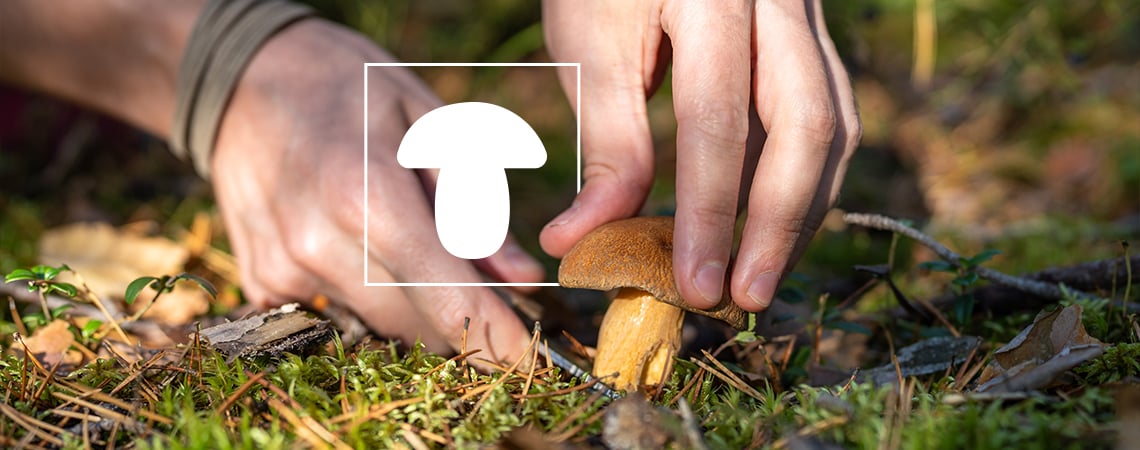
How & Why to Grow Mushrooms (Starter Guide)
Growing edible mushrooms at home is a fascinating process that can take many forms and yield very different results. Here we provide a brief overview so you know what you're in for!
Growing mushrooms is a rewarding experience when it goes well, and deeply frustrating when it goes wrong! Offering numerous wellness benefits and an insight into the weird world of fungi, it’s an activity that’s become increasingly popular, and for good reason. Mushrooms are not only a delicious addition to many dishes but also provide essential nutrients and antioxidants, making them a versatile part of a healthy diet.
This guide introduces the basics of mushroom cultivation to total beginners. Find out why you should grow mushrooms at home, which varieties are most popular, and gain an overview of how you might go about it. Note, however, that this article is not about psychedelic mushrooms—only edible ones!
Mushroom growing over the centuries
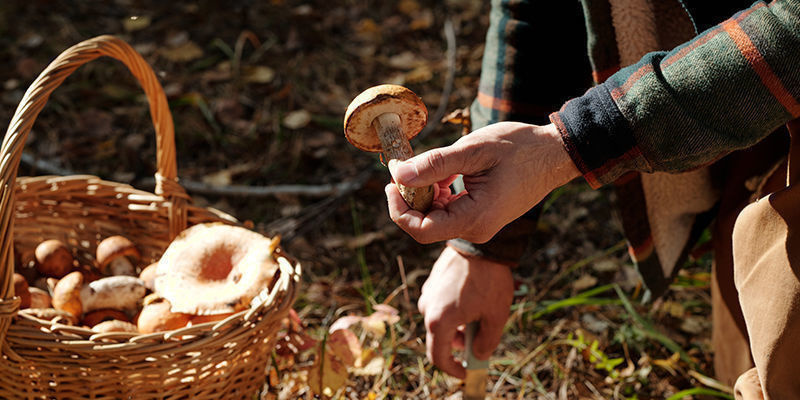
Mushrooms have been cultivated for centuries for both food and holistic purposes. While this is true the world over, there is a particularly rich history of mushroom cultivation in Asia, specifically China.
Historically, mushrooms were often considered a delicacy reserved for the wealthy. In many cultures, they were also harnessed for their holistic properties, which were (and still are) considered to be effective and wide-ranging. Over time, the techniques for growing mushrooms have evolved, making it possible for anyone to cultivate them at home with relative ease. One key thing that binds all fungi is a love of moisture and decomposition!
Benefits of growing mushrooms at home: Why grow your own?
There are numerous reasons to grow your own mushrooms:
- Freshness: Home-grown mushrooms are fresher and more flavourful than store-bought varieties.
- Cost-effective: Growing mushrooms can save you money in the long run.
- Sustainability: Cultivating mushrooms at home is an eco-friendly activity, reducing your carbon footprint.
- Wellness benefits: Mushrooms are rich in vitamins, minerals, and antioxidants, contributing to a healthier diet.
- Educational and fun: Growing mushrooms is a fun, engaging activity. It tends to require a fair bit of effort, but for those willing, it can prove quite addictive to discover how these strange, ancient organisms live.
Most popular mushroom varieties
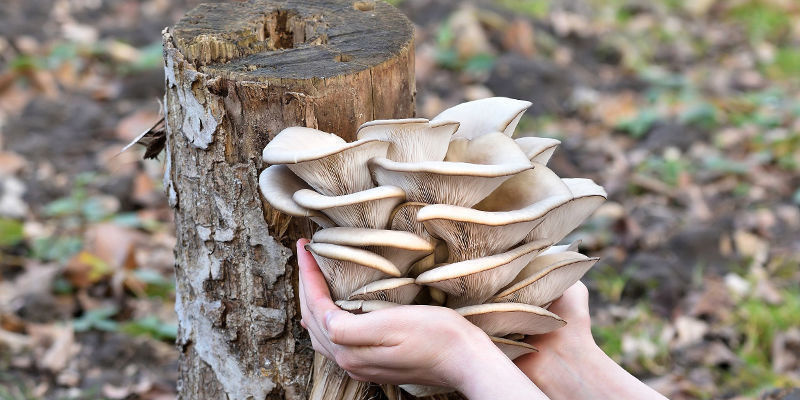
Being hundreds of millions of years old, there are plenty of mushroom varieties to choose from. However, to narrow it down for you just a little, here are several of the most popular to grow at home.
Button mushroom
Button mushrooms are among the most commonly grown and consumed varieties. Even if you don’t know them by name, it’s highly likely you’ve come across them before. They are versatile and can be used in a whole range of recipes due to their subtle flavour. Typically, these mushrooms are grown on composted manure.
Reishi
Reishi mushrooms are prized for their holistic potential, particularly in traditional Chinese medicine, where their usage dates back over 1,000 years. They also have a distinct and much-loved flavour, making them a great option for cooks too. They are most often grown on hardwood logs or sawdust substrates.
Lion's mane
Lion's mane mushrooms are known for their unique, shaggy appearance and potential cognitive benefits. These mushrooms are worth cultivating just for their highly unusual, almost alien appearance. Strange indeed! They grow best on hardwood sawdust or logs.
Oyster
Oyster mushrooms come in several varieties, including pink, grey, golden, and king. These mushrooms have delicious flavours and are popular ingredients in cooking. They are easy to grow and thrive on a variety of substrates, such as straw or sawdust.
Shiitake
Shiitake mushrooms are known for their rich, savoury flavor. You’ve probably heard the name before, even if you’ve never eaten them yourself. These are one of the most popular “premium” culinary mushrooms in the world, and are good fun to grow at home. Usually, they are grown on hardwood logs or sawdust blocks.
Vermont morel
Morel mushrooms are highly sought after for their distinctive flavour. They typically grow in the wild, but can be cultivated on specific substrates in controlled environments if you’ve got the skills. However, you should perhaps try out an easier species of mushroom before attempting the Vermont morel.
King trumpet
King trumpet mushrooms are known for their thick stems and delicate flavour, making them a popular culinary option. They tend to grow best on sawdust substrates.
An overview of mushroom growing methods
Mushroom growing methods are almost as varied as the mushrooms themselves, with certain methods suited more to certain species. The trick is to try to mimic the mushroom’s natural habitat. Here is a brief overview of common mushroom cultivation methods.
Grow kit
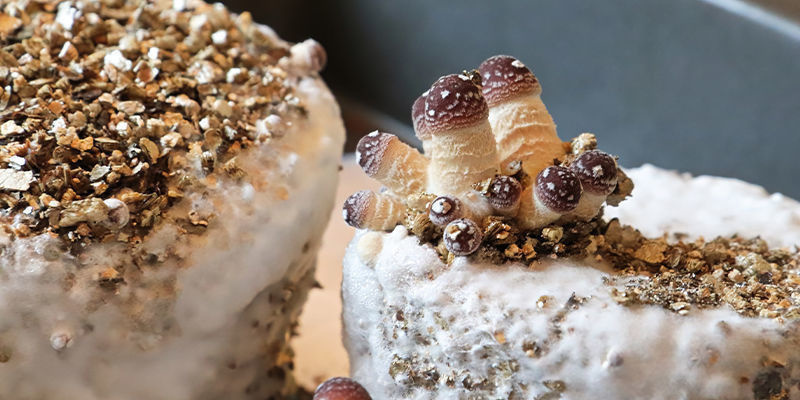
Grow kits are the easiest way for beginners to start cultivating mushrooms. They come with all the necessary components and are sometimes even pre-inoculated with mushroom spawn. Otherwise, you can easily inoculate them yourself and let them grow. These kits minimise the risk of contamination and are a good place to start when growing mushrooms at home. Simply follow the instructions provided.
Wood chip garden bed
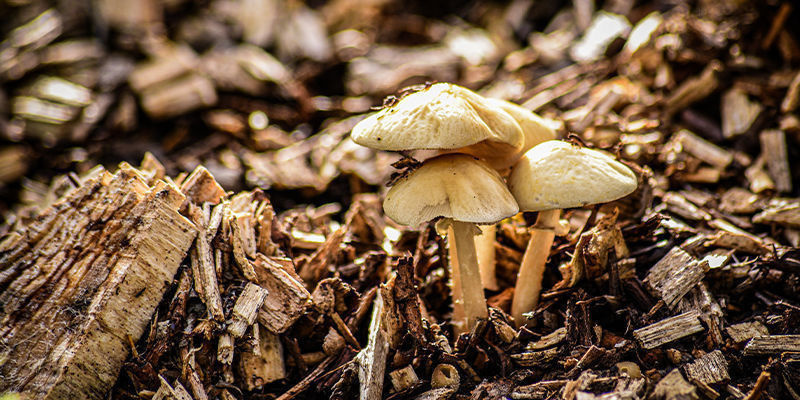
Creating a garden bed with wood chips is a natural method suitable for outdoor cultivation, and it creates a sort of bridge between fully managed cultivation and wild cultivation. Although you set it up and have some control over it, the elements play a large role too. This method works well for varieties like wine cap and king stropharia. Necessary equipment includes wood chips, mushroom spawn, and a shaded outdoor area that is exposed to water (or you can water it). Pros include low cost and large yields, and the fact that a single pile of wood chips can sustain itself over many years. Some drawbacks include a longer setup time and potential contamination, such as that from other species of mushroom.
Logs
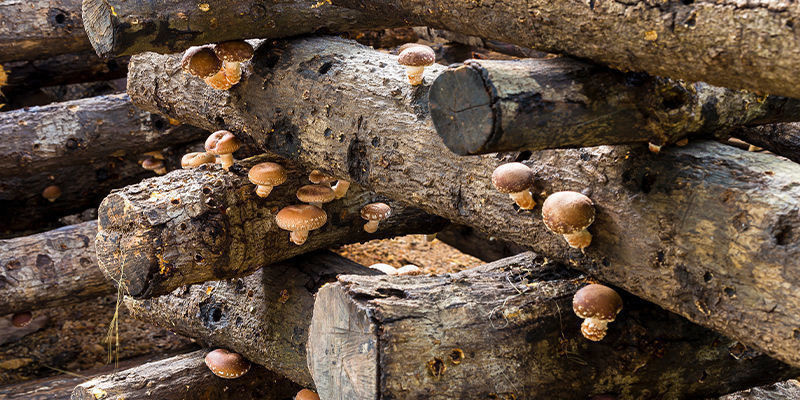
Growing mushrooms on logs is a traditional method that imitates the environment of natural dead wood. It’s ideal for shiitake and reishi varieties. It requires hardwood logs, spawn plugs, and wax to seal the inoculation sites. These are then often left soaked under a tarpaulin while the mycelium colonises the logs—and the mushrooms appear when the tarpaulin is removed. Some benefits are the natural, sustainable approach and potential for multiple years of flushes. Cons include the initial labour and longer incubation period.
Pasteurised substrate
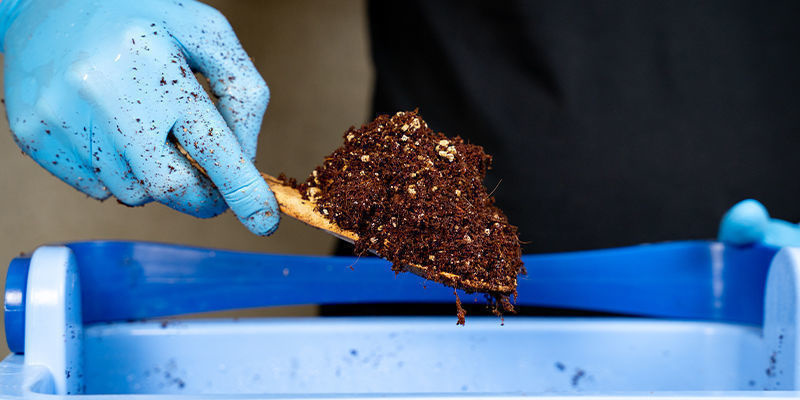
This method involves using substrates like straw, dung, or coffee grounds, which are then pasteurised to kill contaminants that may otherwise colonise it instead. Oyster mushrooms thrive with this approach. The equipment needed includes a substrate, spawn, and a container. Some pros are fast yields and high productivity. The cons include the need for pasteurisation equipment and the potential for contamination if it goes wrong.
Sawdust substrate
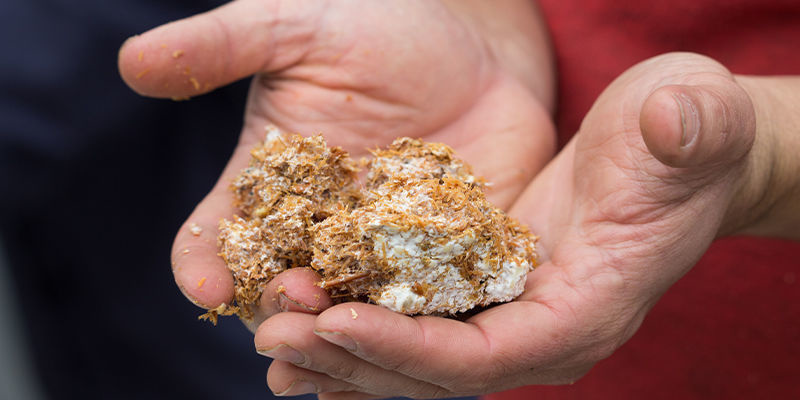
Sawdust substrates are ideal for growing varieties like lion's mane and shiitake. This method requires sawdust, spawn, and appropriate containers. Pros include versatility and high yields, while the cons are the need for precise moisture control, as sawdust can dry out quite quickly.
From spawn to harvest: The 5 stages of growing mushrooms
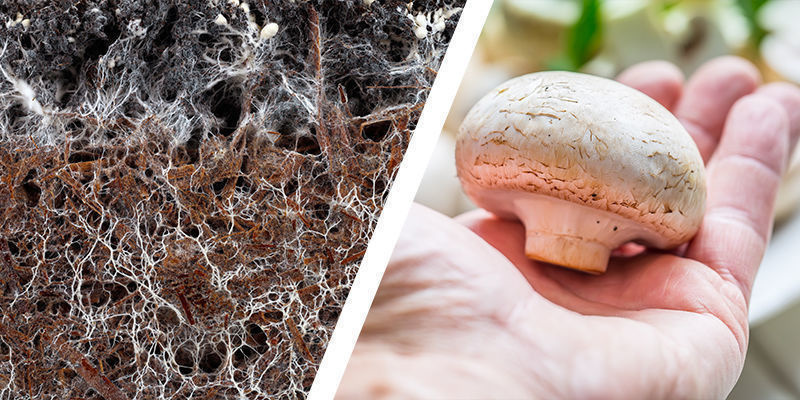
When broken down, the process of cultivation can be split into five stages. Understanding each of these stages and what they require is key to preparing for your very own grow.
1. Mushroom spawn
Spawn, also referred to as spores, are like the seeds of mushrooms. From this, a whole crop will grow. Basically, without spawn, you have no way to grow your mushrooms. Therefore, it’s important to source high-quality spores.
2. Inoculation of mushroom substrate
Inoculation involves introducing the spawn to the substrate, allowing the mycelium to colonise it. Depending on the method and species, this may take place in a highly sterilised environment to prevent contamination. Some species are more vigorous and outcompete competition more easily.
3. Incubation phase
During incubation, the inoculated substrate is kept in optimal conditions for mycelium growth—usually in a dark, humid environment. The temperature will depend on the variety in question, as each has different requirements. Depending on what and how you’re growing, this stage can last anywhere between a few weeks and many months. Only when a substrate is fully colonised with mycelium will the mushroom fruiting bodies appear.
4. Fruiting the mushrooms
Once the substrate is fully colonised, conditions are adjusted to trigger mushroom fruiting, such as increasing light and fresh air. This is often achieved by somehow opening the substrate up to the wider environment. Mushroom development is usually very rapid, taking mere days in some cases. At this point, the risk of contamination is reduced as the substrate will be well colonised with your desired mycelium.
5. Harvesting & further flushes
Mushrooms are harvested when mature, and the substrate can often produce multiple flushes with proper care. Some substrates, such as logs or wood chip piles, will continue to produce new crops each year. Other methods produce a single batch and are then finished.
Common challenges and solutions in mushroom growing
Growing mushrooms can come with challenges, including:
- Contamination: This is perhaps the most common and frustrating problem people encounter when growing mushrooms. The environments in which they grow are hospitable to a whole range of bacteria and fungi, and certain precautions must be taken to ensure that your chosen species wins.
- Improper growth conditions: Maintain optimal humidity, temperature, and light levels for the specific mushroom variety. Some species have quite specific requirements. For instance, mushrooms that grow in warm climates will simply not develop if the temperatures are too low.
- Poor yields: Regularly monitor and adjust conditions, and use quality spawn to improve yields. High-quality substrates that contain the correct nutrients are also key to achieving good results.
Growing mushrooms at home: Well worth it!
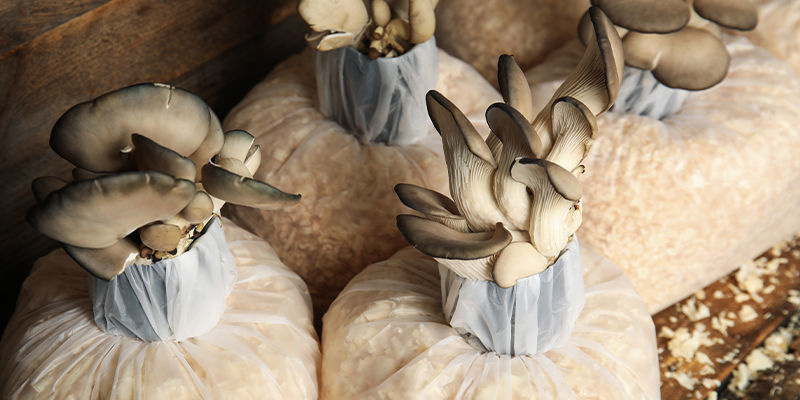
Growing mushrooms at home can be an interesting endeavour that provides fresh, nutritious, and very tasty food. Plus, some look incredibly weird and cool while they’re growing! With the right approach and a bit of patience, anyone can start cultivating mushrooms—just be prepared for things to go wrong sometimes, as they often do.
If you’re interested, we have plenty of other resources available regarding mushroom cultivation, so take a look!
-
 5 min
August 23, 2024
Fungal Flowers: Can Mushrooms Revolutionise The World Of...
Mushrooms and flowering plants belong to two entirely different kingdoms of life. However, species from each are undeniable beautiful. Humans have grown and displayed flowers in their dwellings for...
5 min
August 23, 2024
Fungal Flowers: Can Mushrooms Revolutionise The World Of...
Mushrooms and flowering plants belong to two entirely different kingdoms of life. However, species from each are undeniable beautiful. Humans have grown and displayed flowers in their dwellings for...
-
 4 min
May 23, 2024
How To Make A Casing Layer For Growing Mushrooms
With just a few materials and some household equipment, you can effortlessly increase the performance of your mushrooms by creating a casing layer. It might sound complicated, but it's anything...
4 min
May 23, 2024
How To Make A Casing Layer For Growing Mushrooms
With just a few materials and some household equipment, you can effortlessly increase the performance of your mushrooms by creating a casing layer. It might sound complicated, but it's anything...
-
 4 min
July 3, 2023
Discover Top 10 Mushrooms For Your Health
With so many varieties of mushrooms available, there's plenty that our funghi friends offer in terms of potential health and well-being benefits for users. What's more is that these mushroom...
4 min
July 3, 2023
Discover Top 10 Mushrooms For Your Health
With so many varieties of mushrooms available, there's plenty that our funghi friends offer in terms of potential health and well-being benefits for users. What's more is that these mushroom...
-
 3 min
June 13, 2019
How To Grow Fresh Mushrooms Kits
3 min
June 13, 2019
How To Grow Fresh Mushrooms Kits











 United States
United States








